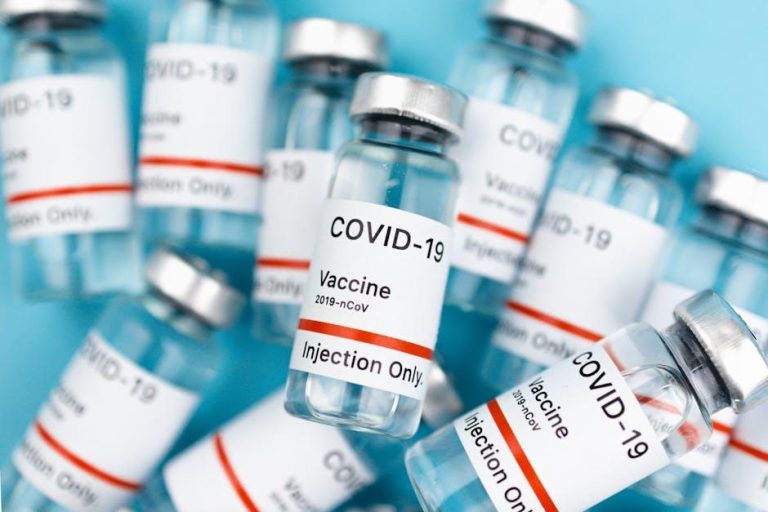FDA, RFK Jr. Aim to Remove Ingestible Fluoride Products Used to Protect Kids’ Teeth – MedPage Today
Fluoride has long been a cornerstone in preventing tooth decay, especially in children. But recent conversations triggered by the U.S. Food and Drug Administration (FDA) alongside commentary from activist Robert F. Kennedy Jr. (RFK Jr.) are stirring debate on the safety and necessity of ingestible fluoride products specifically designed for pediatric use. This article explores the latest developments, potential impacts on children’s dental health, and what parents need to know.
What Are Ingestible Fluoride Products?
Ingestible fluoride products are supplements like tablets, drops, and lozenges intended for children living in areas where fluoride is not adequately present in the local water supply. Traditionally, they have served as an added layer of protection to help reduce the risk of cavities.
- Fluoride tablets: Pills providing a measured fluoride dose.
- Fluoride drops: Liquid supplements administered orally.
- Fluoride lozenges: Slowly dissolving in the mouth for systemic fluoride intake.
These products have been endorsed by numerous dental associations worldwide for decades. However, emerging concerns raise questions about potential overexposure and toxicity risks.
The Role of FDA and RFK Jr. in the Debate
The FDA regulates ingestible fluoride supplements in the U.S. to ensure safety and effectiveness. Recently, prompted by new scientific data and public concern, the agency has initiated reviews to reconsider the regulatory status of these products.
Meanwhile, RFK Jr., a well-known environmental attorney and health advocate, has publicly campaigned against systemic fluoride use, including ingestible forms. He argues that the risks associated with fluoride ingestion—especially in children—may outweigh the benefits, advocating for alternative preventive measures.
Key Points in Their Initiative
- Reevaluation of safety margins for fluoride supplement dosage in children.
- Consideration to remove or restrict ingestible fluoride products from the market.
- Greater emphasis on topical fluoride applications rather than systemic intake.
- Increased education on fluoride sources to prevent accidental overexposure.
Why the Shift? Understanding the Concerns
Although fluoride is effective in cavity prevention, critics highlight accumulating evidence suggesting systemic ingestion could contribute to adverse health effects such as:
- Dental fluorosis – white spots or streaks on children’s teeth due to excessive fluoride during enamel formation.
- Potential neurodevelopmental issues linked with high fluoride exposure.
- Questions regarding the long-term safety of low-dose supplemental fluoride ingestion.
Importantly, the debate hinges on finding a balance between benefits and risks, especially in children whose developing bodies are more vulnerable.
Current Recommendations for Parents
While the regulatory process is ongoing, here are practical tips parents can follow to safeguard their children’s dental health:
- Consult your pediatrician or dentist: Before using fluoride supplements, ensure they are necessary based on your local water fluoride levels.
- Prioritize topical fluoride: Use fluoride toothpaste and professional applications rather than ingestible forms.
- Monitor fluoride sources: Be aware of foods, drinks, and oral care products that contain fluoride.
- Avoid overuse: Never exceed recommended doses of fluoride supplements.
- Encourage regular dental checkups: Early dental visits can help manage fluoride use appropriately.
Benefits vs. Risks of Ingestible Fluoride Products
| Aspect | Benefits | Risks |
|---|---|---|
| Cavity Prevention | Reduces dental decay in fluoride-deficient areas | Limited benefit if fluoride from other sources is adequate |
| Ease of Use | Simple administration through tablets or drops | Risk of accidental overdose or misuse |
| Health Impact | Supports enamel strengthening during development | Potential dental fluorosis and systemic health concerns |
| Regulation | Monitored and dosed for safety by FDA | New regulatory scrutiny may lead to removal or stricter controls |
Case Studies & Scientific Insights
Recent studies have explored associations between fluoride ingestion levels and dental fluorosis incidence:
- A 2023 study published in the Journal of Dental Research linked excess fluoride supplements with increased fluorosis in children aged 1-5 years.
- Research from the Environmental Health Perspectives journal observed correlations between elevated systemic fluoride exposure and potential subtle neurocognitive effects in pediatric populations.
- The FDA has cited these studies to justify reevaluation efforts in public safety policies for fluoride supplements.
Firsthand Experiences: A Parent’s Perspective
Jessica Miller, mother of two from Ohio, shares her experience:
“Our dentist prescribed fluoride drops because our area’s water lacked enough fluoride. While my kids didn’t have cavities, I noticed some faint white spots on their teeth. Learning about possible fluorosis made me reconsider supplements—now we focus on fluoride toothpaste and regular checkups instead.”
Jessica’s story reflects a broader trend of growing parental caution and demand for clearer guidelines.
Conclusion: What’s Next for Consumeable Fluoride Products?
The collaboration between the FDA and advocates like RFK Jr. signals a meaningful shift in the approach to fluoride use in children’s health. While fluoride remains a proven agent against tooth decay, its systemic ingestion is being critically reviewed amid safety concerns.
Parents should stay informed, consult healthcare providers, and remain vigilant about all fluoride sources. Ultimately, dental health strategies are evolving to emphasize safety alongside effectiveness for the youngest and most vulnerable.
Stay tuned to reliable news outlets like MedPage Today for updates on regulatory decisions and guidelines regarding ingestible fluoride supplements.


